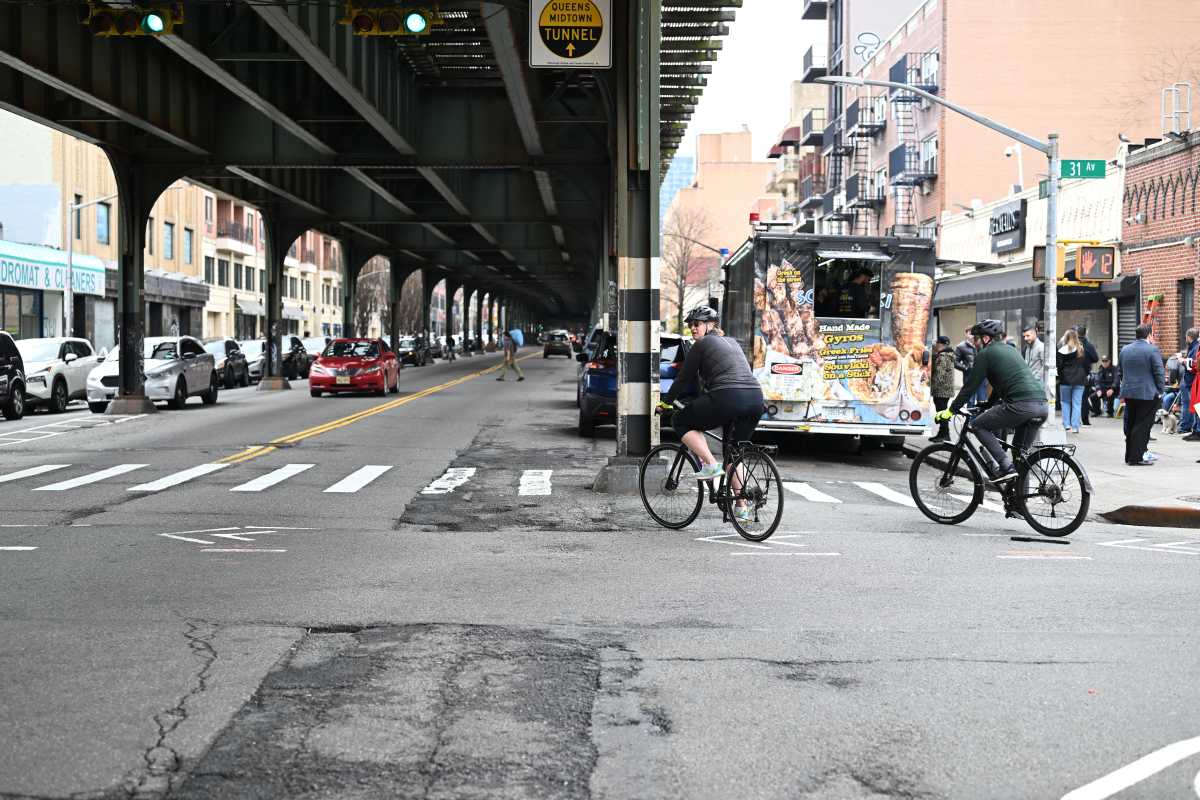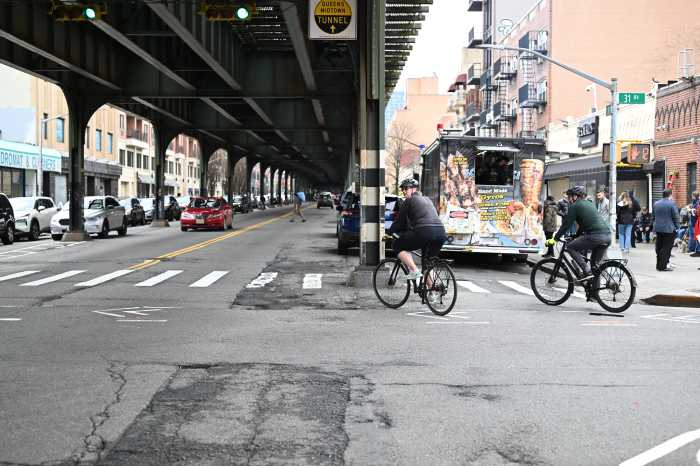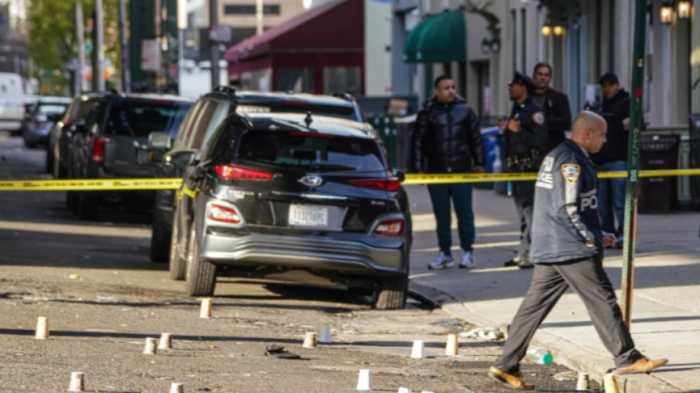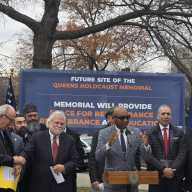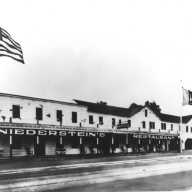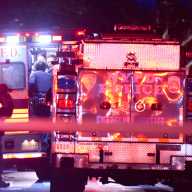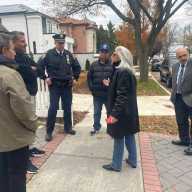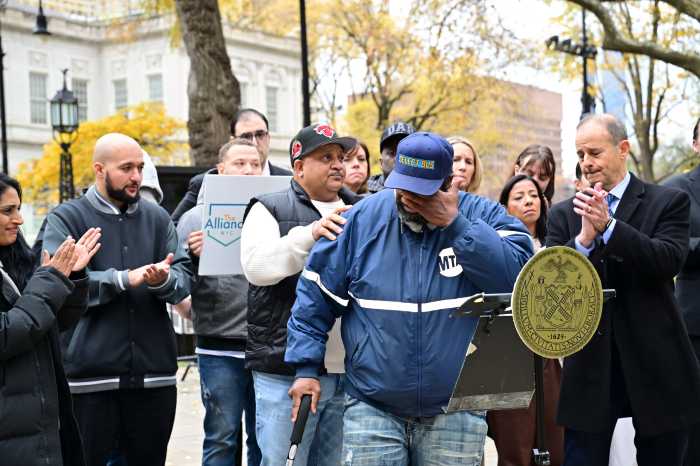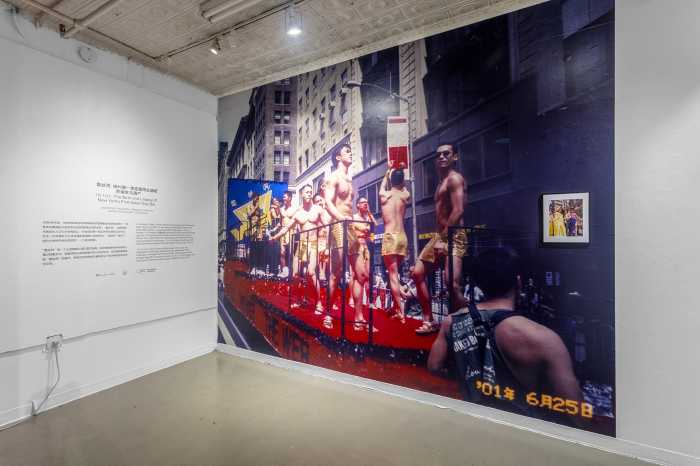Elected officials in western Queens have outlined their support for the Department of Transportation’s planned protected bike lanes underneath the elevated subway tracks on 31st Street after the New York State Supreme Court issued a temporary injunction preventing the plan from going forward.
Council Member Tiffany Cabán, Assembly Member Jessica González-Rojas and state Sen. Kristen Gonzalez said it is their “duty” as elected officials to do everything they can to prevent future tragedies along 31st Street, pointing to DOT data that recorded two fatalities and 178 injuries along the roadway over the past five years.
They said the DOT’s plan, which addresses a mile-long stretch of 31st Street from 36th Avenue to Newtown Avenue, “answers the call” to make communities safer.
The DOT proposal, which covers both sides of 31st Street, would reduce the width of the street’s moving lanes and parking lanes by three feet and five feet, respectively, in order to make room for the 8-feet-wide protected bike lanes on either side of the thoroughfare.
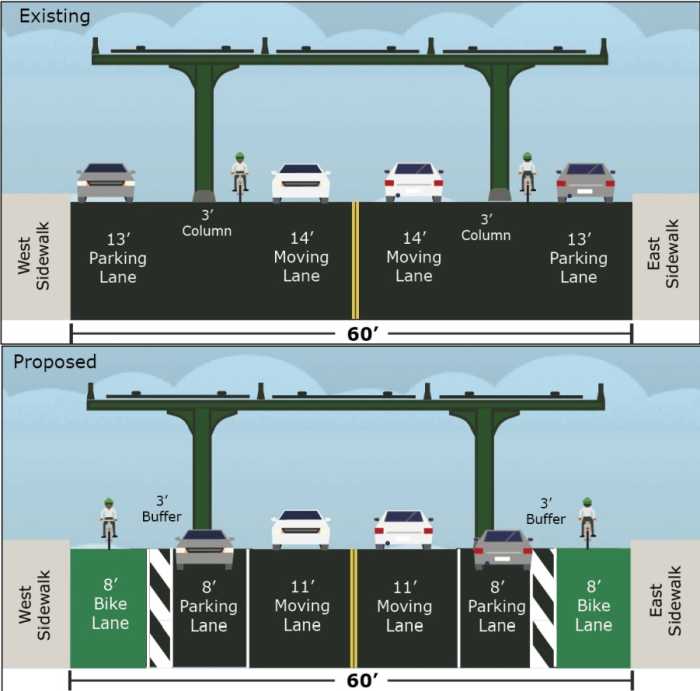
The DOT also plans to add painted pedestrian islands at intersections to shorten pedestrian crossing distances and prevent motorists from cutting corners. The plan additionally bans parking at corners to boost visibility.
Elected officials said the DOT’s redesign will “save lives” on 31st Street, noting that the corridor ranks among the top 10% most dangerous streets in Queens for serious injuries.
They also referenced a fatal crash that took place in Astoria last week as evidence that the protected bike lanes will help save lives. The crash, which took place in an area not covered by the redesign at the intersection of 19th Avenue and 42nd Street, resulted in the death of three men.
“As we’re reeling from this tragedy, it is our duty as elected officials to do everything we can to prevent future tragedies with data-driven safety measures such as the 31st Street Safety Plan,” Cabán, González-Rojas and Gonzalez said in a joint statement.
“The Safety Plan would protect pedestrians, cyclists, and drivers while making our streets safer and less congested. Drivers will not lose a single lane for driving or parking.”
They noted that their offices “spearheaded” the Western Queens Street Safety Plan alongside community partners in what they described as a “multi-year planning process.”
Cabán, González-Rojas and Gonzalez said the Street Safety Plan called for protected bike lanes, daylighting and pedestrian plazas to make streets in Western Queens safer for all members of the community. They added that the DOT’s proposed redesign of 31st Street began to make those ideas a reality.
“NYC DOT engaged with 52 different businesses within project limits, and 90% provided feedback that has been thoughtfully incorporated into the updated redesign. This project utilizes common design elements found on streets across the city that comply with local law and ADA regulations. We continue to stand in support of the 31st Street Redesign.”
The New York State Supreme Court issued a temporary injunction against the proposed redesign on Aug. 13 following a legal challenge from a coalition of local businesses.
The court has ordered the DOT to show cause after the 31st Street Business Association alleged that the proposed bike lanes would compromise public safety, negatively impact local businesses and violate city laws.
The ruling prevents the DOT from implementing the proposed redesign before a show cause hearing scheduled for Sept. 22.
Joseph Mirabella, an Astoria resident and the President of the 31st Street Business Association, welcomed the injunction, stating that the ruling showcases that the association’s case has “merit.”
Mirabella said the association’s end goal is not to prevent the DOT from installing protected bike lanes in Astoria but said the group is calling for the bike lanes to be installed on a residential corridor such as 33rd Street, where there is less traffic and less store fronts than the 31st Street corridor. He also stated that the 31st Street corridor has significant visibility issues due to the overhead tracks.
“It’s mind-boggling that they (the DOT) have come back with arguably the worst street to put this on,” Mirabella told QNS last week.
The business association launched an online petition opposing the installation of bike lanes along 31st Street in April, receiving more than 4,500 signatures. A rival petition supporting the bike lanes has received roughly 3,600 signatures, underscoring the divisive nature of the issue.
The 31st Street Business Association argues that the proposed bike lanes would negatively impact local businesses while creating new safety issues by installing bike lanes through loading and delivery zones along 31st Street.

Mirabella said there are “serious” visibility issues along 31st Street due to the elevated tracks and insists that it is a bad idea to encourage cyclists to use the corridor. Instead, Mirabella believes that the DOT should focus its energy on installing bike lanes on 33rd Street or another similar corridor that does not have overhead subway tracks.
“We support cycling infrastructure,” Mirabella said. “But given the nature of 31st Street with the amount of commercial loading zones and the subway running overhead, it makes no sense to do this here.”
A number of business owners along the stretch of 31st Street covered by the proposal echoed that sentiment and alleged that they were only consulted about the redesign after the DOT had already developed the proposal.
Bob Battipaglia of Grand Wine at 30-05 31st St. accused the DOT of developing the proposal without seeking the input of the local community.
“They basically just shoved it down our throats without allowing us to have a reasonable chance for opposition,” Battipaglia told QNS last week. “It was never really a back and forth discussion.”
Meanwhile, Panos Adamopoulos of Pilates Designs, LLC at 35-17 31st St. said the redesign would force him to close down by making it more difficult to take deliveries and for customers visiting his store.
Adamopolous described himself as a long-time cyclist who supports cycling infrastructure but insisted that 31st Street was not an ideal location for a protected bike lane, noting that the corridor is heavily used by motorists and acts as a route between two major bridges — the Queensboro Bridge and the Triborough Bridge.
He accused the DOT of “going behind the backs” of business owners along 31st Street.
“We were misled. We were deceived,” Adamopolous said.
On the other hand, supporters of the DOT plan argue that protected bike lanes are essential for improving safety along 31st Street, citing two traffic fatalities and 11 serious injuries reported on the corridor between 2020 and 2024.
DOT data cites “multiple instances” of cyclists getting “doored” – referring to when a cyclist collides with a car door that has been opened– while over 30% of pedestrian injuries have been caused by left-turn crashes.
Ben Furnas, executive director of non-profit Transportation Alternatives, said the redesign would help make a dangerous stretch of Astoria safer for all road users, adding that the Supreme Court injunction puts families in “harm’s way.”
“This injunction puts Queens families in harm’s way,” Furnas said in a statement. “The 31st Street redesign was created to protect people from dangerous traffic in a corridor with a long history of crashes.

